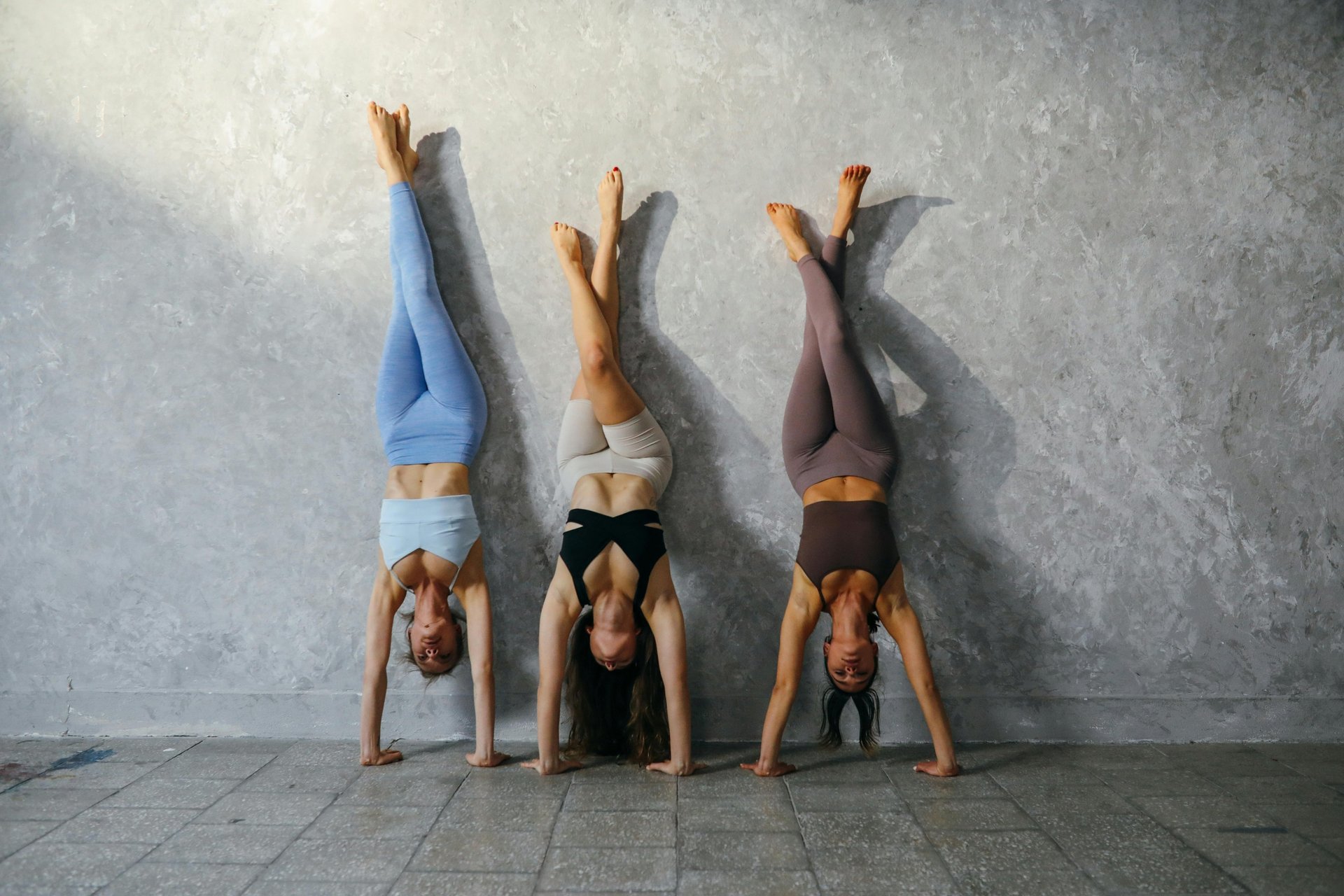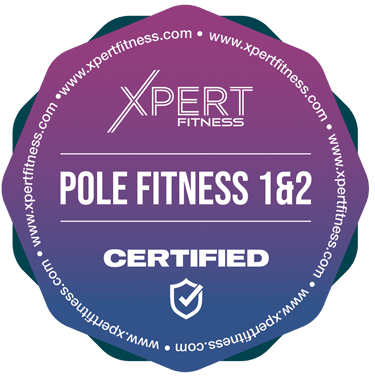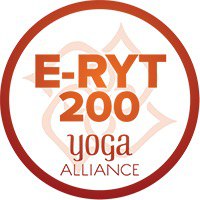
STRETCH & FLEXIBILITY: HEADSTANDS
HEADSTANDS
Inversions: Every week, we will explore a different type of inversion and learn the proper techniques to execute them safely. We will work towards mastering a variety of inversions, including headstands and forearm stands. Through a step-by-step approach, we will build the necessary strength, balance, and body awareness to perform these challenging postures with confidence and security.
Inversion Classes are designed to teach students how to safely and effectively perform various inversion poses, where the heart is above the head, such as headstands, shoulder stands, and other upside-down poses. These classes focus on building strength, balance, and confidence while developing the skills needed to perform inversions with proper technique and safety. Whether you're a beginner looking to explore the world of inversions or someone with more experience aiming to refine your practice, these classes offer structured progressions to help you gradually master inverted poses.
What to Expect in an Inversion Class:
Gentle Warm-Up:
Every inversion class begins with a thorough warm-up to prepare the body for the demands of inverting. This includes gentle stretches to open up the shoulders, hips, and spine, as well as mobilizing the wrists, neck, and core.
Some classes will include gentle forward bends and core activation exercises to engage the muscles you'll need for balancing upside down.
Core Strengthening:
A key component of inversions is core strength, as the abdominal muscles are essential for stability and control when holding inverted poses. Core exercises like planks, boat pose, and leg lifts are commonly incorporated to build the strength necessary for inversions.
The shoulders, arms, and wrists are also worked on through strength-building exercises like dolphin push-ups or downward dog, which provide the foundation for inversions such as headstands and handstands.
Progressive Inversion Techniques:
Inversion classes focus on a progressive approach to learning how to safely perform inversions. If you’re a beginner, the class might start with modified poses, such as downward dog or dolphin pose, to begin familiarizing yourself with being upside down.
As you progress, the instructor will guide you through wall-supported inversions (e.g., using the wall for handstands or headstands) to build confidence and stability in the pose before moving toward freestanding inversions.
For more advanced students, the focus will be on refining technique and strength for freestanding inversions, such as headstands, forearm stands, or scorpion pose, where no wall or support is used.
Breath Awareness and Focus:
Breath control is a crucial aspect of inversions, helping you maintain calm and focus while upside down. Inversion classes emphasize deep, steady breathing to help you maintain balance and prevent unnecessary tension.
The instructor will guide you to use Ujjayi pranayama (victorious breath) or deep abdominal breathing to support your practice and ease any anxiety that may come from being upside down.
Alignment and Safety:
Proper alignment is essential to prevent injury and ensure that you're using the right muscles during inversions. The instructor will focus on body alignment, such as ensuring your hands are placed properly for handstands or your arms are engaged in headstands to protect the neck and shoulders.
The use of props such as blocks, straps, and wall support will be encouraged, especially for beginners, to help stabilize and guide the body into proper alignment during practice.
Spotting and Partner Assistance:
Depending on the class, there may be opportunities for partner-assisted inversions, where one person helps spot or assist the other in achieving proper form and safety while practicing inversions. This provides an added layer of support and can help students feel more secure as they explore their practice.
For beginners, instructors may provide hands-on adjustments to help students feel the proper body positioning and technique required to hold an inversion.
Freestanding Inversions:
As students become more comfortable with wall-supported inversions, the class will focus on building up to freestanding inversions. This may involve focusing on kick-ups, balance drills, and using core strength to hold the pose independently. The instructor will provide cues and tips on how to kick into the pose, where to look for balance, and how to control your body during the inversion.
Cool-Down and Relaxation:
After practicing inversions, the body needs time to recover and re-align. The class will end with a cool-down that includes stretches for the neck, shoulders, and spine to release any tension built up during the practice.
A brief restorative pose, like child’s pose or supine twists, may be included to calm the nervous system and help the body adjust after being upside down.
Benefits of Inversion Classes:
Increased Strength:
Inversion poses require significant upper body strength, particularly in the shoulders, arms, and core. These classes help you develop strength in these areas while building endurance for holding inverted poses.
Improved Balance and Stability:
Practicing inversions improves your overall balance and proprioception (awareness of your body in space), which can enhance coordination and stability in both yoga poses and daily activities.
Improved Circulation:
Inverting the body encourages better blood flow to the upper body and head, which can help with circulation, promote brain health, and provide a natural “refreshing” feeling.
Mental Clarity and Focus:
Inversions require focus and concentration, helping clear the mind and reduce mental stress. Being upside down can create a sense of mental clarity and grounding, helping with stress relief and emotional balance.
Increased Flexibility:
While inversions primarily build strength, they also promote flexibility in the spine, shoulders, and hips. The deep stretches involved in moving into and out of an inversion help improve flexibility in the upper body.
Enhanced Posture:
Practicing inversions can improve posture by strengthening the muscles along the spine and increasing awareness of body alignment, leading to better posture both on and off the mat.
Boosted Confidence:
As students work through the challenges of learning inversions, they often develop a sense of confidence in their ability to overcome fears and push beyond their limits. Mastering a challenging inversion like a handstand or headstand provides a great sense of accomplishment.
Who Would Benefit from Inversion Classes?
Anyone looking to build strength in the shoulders, arms, and core, and improve their overall balance and coordination.
Yoga practitioners looking to advance their practice by incorporating inversions like handstands, headstands, or forearm stands.
Dancers seeking to develop greater balance and strength for acrobatic movements and inversions in their performances.
Athletes who want to improve upper body strength, core stability, and mental focus for sports performance.
Beginners who are curious about trying inversions in a safe and structured environment.
Why These Classes Are Fun:
Exciting Challenge: Learning to do inversions is a fun and empowering challenge that allows you to push your limits and see real progress as you master different poses.
Variety and Playfulness: Inversion practice is playful and creative. You can explore different inversions and transition between poses in unique ways, making the process dynamic and enjoyable.
Sense of Achievement: Every time you succeed in holding a pose, especially without support, it feels like a huge accomplishment, and the excitement builds with each step you take toward mastering the inversion.
Conclusion:
Inversion classes provide a safe, supportive environment for students to explore and master the art of inversions. Whether you're a complete beginner or an experienced practitioner looking to refine your handstand, headstand, or other inverted poses, these classes are designed to gradually build strength, balance, and confidence. With the right techniques and guidance, inversions can become an exciting and rewarding part of your yoga or fitness practice!
TIMETABLE
Wednesday's 5-6 pm
Saturday's 10-11 am
Off Peak Times 9 am - 12 pm
Peak Times 5 pm - 9 pm
*Schedule is subject to change




